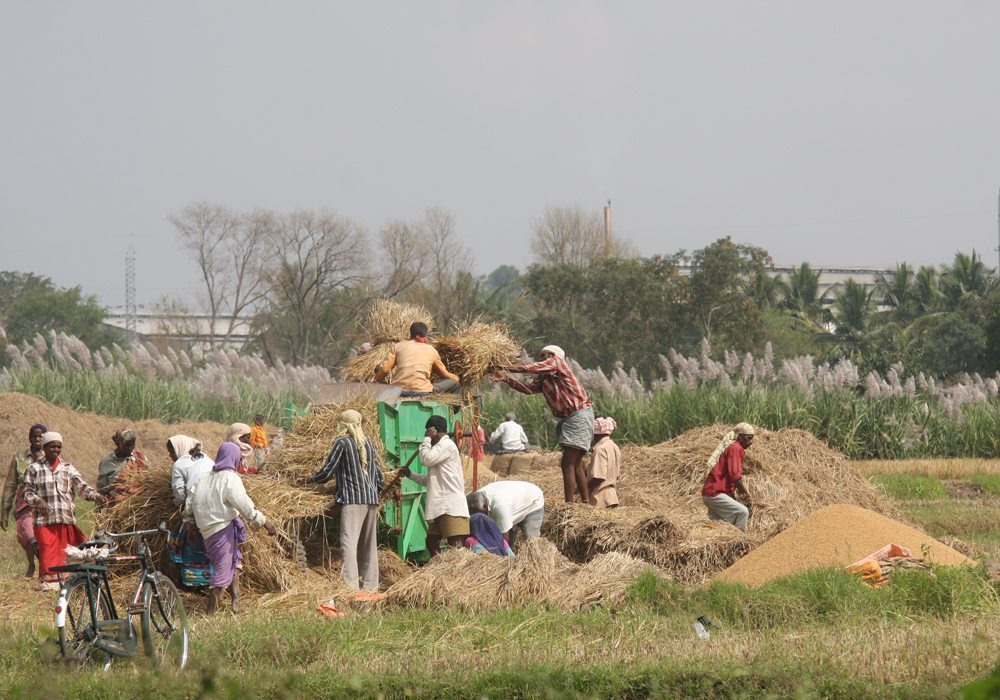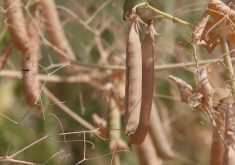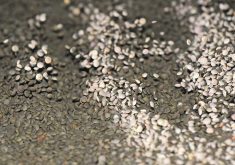MUMBAI, Nov 29 (Reuters) — India’s production of wheat and pulses is expected to jump in 2018 as a hike in the government’s assured purchase prices and ample rainfall have prompted farmers to plant more of the winter crops, industry officials told Reuters.
Higher production will help the south Asian country reduce imports of pulses in the 2018-19 fiscal year starting April 1 and could allow it to avoid buying overseas wheat for the first time in three years.
Farmers are likely to expand the area given over to chickpeas by nearly 20 percent, said Pravin Dongre, chairperson of the India Pulses and Grains Association.
Read Also

Farming Smarter receives financial boost from Alberta government for potato research
Farming Smarter near Lethbridge got a boost to its research equipment, thanks to the Alberta government’s increase in funding for research associations.
“Chickpeas gave better returns to farmers than oilseeds. Initial reports are indicating a significant jump in sowing,” Dongre said.
Chickpea, also known as chana, is the main winter-sown pulse crop in India. A rise in chickpea production will help the country reduce pulses imports in 2018-19, he said.
India, the world’s biggest importer of pulses, shipped in 6.6 million tonnes of mostly peas in fiscal 2016-17.
The government’s decision to raise the chickpea support price by 10 percent and a recent move to impose a 50 percent import duty on peas will lure farmers to plant chickpea, said Nitin Kalantri, a pulses miller based at Latur in Maharashtra.
In 2016-17, India’s pea imports jumped 41 percent from a year earlier to a record 3.17 million tonnes.
India imports peas mainly from Canada, Russia, United States and France.
Wheat acreage will likely increase by five percent, said Harish Galipelli, head of commodities and currencies at Inditrade Derivatives & Commodities.
“Wheat prices are stable. Government has raised minimum support price and import duty. This will certainly encourage farmers to expand area.”
The world’s second biggest wheat producer earlier this month doubled the import tax on wheat to 20 percent.
In October, India raised the price at which the federal government will buy new-season wheat from local farmers by 6.8 percent to 1,735 rupees (US$26.93) per 100 kg or $269.30 per tonne. That works out to US$7.33 per bushel. The Minneapolis spring wheat December contract is trading around $6 a bushel and Kansas and Chicago winter wheats are both around $4.10.
An expected increase in wheat production to a new high and rising stockpiles meant India would not need to import wheat in 2018-19, an official with state-run Food Corporation of India said.
Wheat stocks with government agencies stood at 23.9 million tonnes as on Nov. 1, up 27 percent from a year ago following record output in 2017, added the official, who declined to be named.
India has imported wheat for the past two years after local production fell due to successive droughts in 2015 and 2016.
The country imported 5.75 million tonnes of wheat in 2016-17, the most in a decade. India imports wheat mainly from Ukraine, Australia, Bulgaria and Russia.
Ample rainfall in October and higher-than-normal water level in reservoirs will ensure better yields in the current season, said Inditrade’s Galipelli.
India’s wheat output in 2017 rose 6.7 percent from a year earlier to a record high 98.38 million tonnes.

















